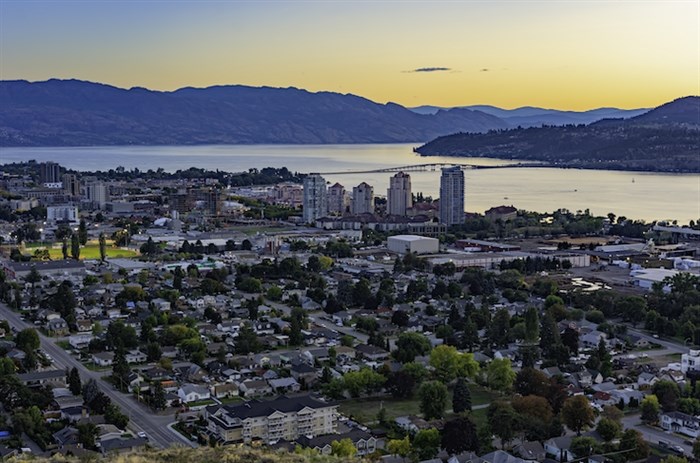
Kelowna is seen in this undated photo taken from Knox Mountain.
Image Credit: ADOBE STOCK
February 10, 2021 - 7:30 AM
The populations of the Central and North Okanagan are growing much faster than those in the Thompson-Nicola and Southern Okanagan.
Recently released figures from Statistics Canada show the cities of Kelowna and Vernon are growing at almost twice the rate of the provincial average.
The population estimates put Kelowna as the fourth fastest-growing census metropolitan area in the country, behind Oshawa, Halifax and Kitchener-Cambridge-Waterloo.
According to the statistics, which estimate growth from July 1, 2019, to July 1, 2020, the population of Kelowna grew 2.1 per cent to 222,748, increasing by more than 4,000 people.
The City of Vernon grew 1.9 per cent to 44,171 with an increase of almost 900 people.
The average population growth in B.C. communities sat at 1.1 per cent.
And it wasn't just the major cities in the North and Central Okanagan that saw significant growth with the rural areas also seeing higher than average population increases.
Lake Country saw the highest growth at 2.2 per cent taking its population to 15,654, while West Kelowna saw a 1.5 per cent increase taking its population up to 36,496.
In the North Okanagan, Enderby recorded a 1.9 per cent increase in its population taking it to 3,188, and Lumby saw a 1.5 per cent jump increasing to 2,014. The Township of Spallumcheen saw a 1.8 per cent jump in its population.
The City of Armstrong was the only census area to see a decline with the population dropping by 0.4 per cent.
While population growth was above the provincial average in the Central and North Okanagan, further south in the Okanagan-Similkameen population growth was much slower.
Only the District of Summerland recorded a population increase higher than the provincial average with the lakeside town of 12,642 people seeing its population grow by 1.2 per cent.
Penticton and Osoyoos only saw their populations grow by 0.6 per cent taking their populations to 36,597 and 5,443 respectively.
Kamloops growth was just above the provincial average at 1.2 per cent, taking its populations to 101,198, an increase of just over 1,000 residents.
While the Thompson-Nicola region saw its growth below the B.C. average at 0.9 per cent.
To contact a reporter for this story, email Ben Bulmer or call (250) 309-5230 or email the editor. You can also submit photos, videos or news tips to the newsroom and be entered to win a monthly prize draw.
We welcome your comments and opinions on our stories but play nice. We won't censor or delete comments unless they contain off-topic statements or links, unnecessary vulgarity, false facts, spam or obviously fake profiles. If you have any concerns about what you see in comments, email the editor in the link above.
News from © iNFOnews, 2021